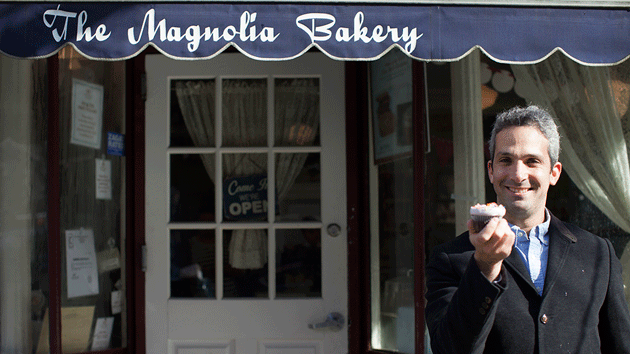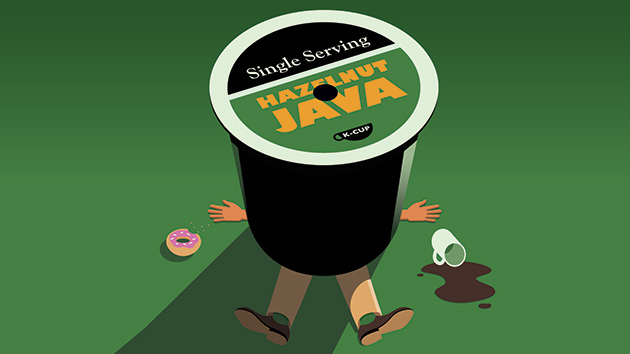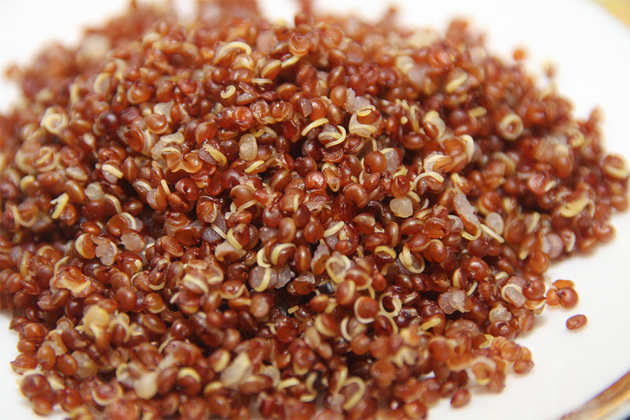
<a href="http://www.shutterstock.com/pic-125198429/stock-photo-red-velvet-cupcakes-with-cream-cheese-frosting-decorated-with-chocolate-hearts.html?src=kZnZtodP2xBJIxY2IfPUbA-3-92" target="_blank">Rose-Marie Henriksson</a>/Shutterstock
What makes a food trend? In his new book, The Tastemakers: Why We’re Crazy for Cupcakes but Fed Up With Fondue, out May 27, journalist David Sax sets out to discover the hidden forces behind our diets. From a cupcake stop on the Sex and the City tour in New York to the board rooms of the McCormick spice company to the apple orchards of Ontario, Sax talks to the people who decide which foods become popular and when. Along the way, he learns that few fads spread on their own. Most are the result of well orchestrated marketing plans—like how the pork industry engineered the bacon trend to help sell less popular pig parts. I spoke to Sax about the Chipotle-fication of Indian food, how Sex and the City made cupcakes sexy, and how the dawn of the HIV/AIDS epidemic hastened the demise of the fondue-party era.

Mother Jones: Your book opens on a Sex and the City tour bus. Why?
David Sax: The book opens on this Sex and the City hotspots tour, which has been running in New York for ten years or so. They stop at the Plaza Hotel, they go by Tiffany’s, they show clips on the bus. The halfway point of the tour is in the West Village, kitty corner from Magnolia Bakery. Most of the people on the tour went right for Magnolia. It was this edible icon of the show and everything it stood for. That encapsulated so much about the cupcake trend. There were people from Sweden, Australia, Middle America. They all wanted to go to Magnolia because this place was the shrine that symbolized so much more than a little cake.
MJ: So is Sex and the City responsible for the cupcake trend?
DS: That was the tipping point. That imparted the cupcake with something entirely above and beyond. It was no longer just about, this is a delicious thing and you should have it. It was about this is a symbol of femininity, sexually liberalized, capitalist feminism. This is the stiletto, the cosmo, the Rabbit vibrator equivalent. It gave cupcakes a storyline. It changed their identity. This is not a child’s treat anymore. This is, ‘You go girl. You get your cupcake.’ The Virginia Slim of the 21st century.
MJ: So that’s one way a food trend can happen, through pop culture. But the way you tell it, the story of bacon was completely different.
DS: This was an industry-driven trend. It was the result of a concerted effort by the pork industry to revive this cut of meat—pork belly, which is what you make bacon out of—that had been so demonized in the 1980s by the low-fat, low-cholesterol diet trend that was so incredibly popular. They spent money to get pork producers and smokehouses to develop round, pre-cooked slices of bacon that would fit on a hamburger, so then they could go to Burger King and Wendy’s and be like, listen, here is the money to help you to develop new burgers. We really want you to try them with bacon. The fast food companies are always looking for something else to sell. So the bacon trend—unlike most trends, which trickle down because chefs are doing it, or some cool bakery in New York is doing it, and it works its way down through Cheesecake Factory to TGI Fridays and Costco—it started in fast food and worked its way up to something that chefs were tossing with Brussels sprouts. And then it hit its cultural moment.
The coffee trend is another example. There is a Swedish tradition of a coffee break called fika in the afternoon. Maxwell House was looking to increase coffee consumption in the ’30s and ’40s, and they happened upon this thing that they put in their ads and marketing. It became such a big thing that it was in union contracts. And that triggered the growth of coffee consumption.
MJ: You also write about how McCormick decides which spices to push.
DS: It’s this process that they go through every year, where their flavor forecasters send out surveys to a bunch of chefs. What things are you using in your kitchen? And then they go to the salespeople and ask, What’s selling? What do we need to sell more of? What are different statistics do we need to consider? Is there more travel to certain countries? More immigration from certain countries? And McCormick uses that forecast and they distil it down to 10 flavor combinations. And they go to their different clients—like Coca-Cola and McDonald’s—and they’re like, we think that sweet chili is going to be the new spice, and here are three things that we’ve devised that we think will work well for you, so here’s a sweet heat chili barbecue sauce for your burgers, or here’s a spice rub of sweet chili from your chicken wings.
MJ: What’s a recent example of that?
DS: The toasted and smoked line of spices. You will see it on your supermarket shelf, but you will also see it in dishes in a lot of mainstream chain restaurants. Now, it’s kind of a chicken and egg—they don’t just come up with these things out of thin air. They are taking cues from what’s going on in the culinary world. In a way it’s reactive. They are reflecting back the culture.
MJ: You also cite the example of how McCormick took a spike in bell jar sales as a sign that Americans were ready for more pickling spices.
DS: Those random statistics—it’s like, bell jar sales, why would that affect anything? But it shows an uptick in a type of behavior that can then be distilled down into taste, and where our taste is going.
KB: How about the effort to make Indian food into the next Chipotle? You write about these people who own Indian restaurant empires, and some of the challenges they face.
DS: I think it happens with all cultural foods that are trying to break into mainstream North American culture. You’ve seen it with the success of Japanese food and sushi. Thai food is another great example. So for years, trend forecasters have been predicting that this is the year that Indian food is going to hit, this is going to be big. It never has crossed that threshold. It’s a very difficult process, changing how people perceive something from very foreign and exotic to something that is increasingly everyday. With Indian food entrepreneurs who have been trying all these different ways of doing it for decades—fine dining, quick service, buffet style, and now the Chipotle-fication of Indian—they’re all just trying to find a format that can click, where people are all of a sudden like, I’ll try that. Chipotle is a great example. It’s this distilled Mexican format that people perceive as higher quality and more authentic than Taco Bell. It has opened up Mexican in this amazing way in North America and elsewhere as well.
MJ: You also write about how the specialty food industry’s annual awards can be really influential in helping a specific product make it into the mainstream.
DS: Whether it’s a restaurant group or Whole Foods supermarket, they are looking for something that will excite their clients. There are innumerable entrepreneurs starting out and trying to sell things that they are cooking or importing. The Sofi Awards is this industry award night that is geared toward the buyers of specialty foods. And specialty foods, well, we think, okay it appears at Dean & Deluca or whatever, whoop de do. But what happens nowadays is that that stuff moves from there to Whole Foods to Costco and Walmart very quickly. It used to take ten years, but now it’s practically overnight. Those awards, as cheesy as they seem, they do push the needle.
MJ: The last chapter in your book is about how a food trend dies.
DS: Food trends fade for a couple reasons: they’re no longer relevant. The excitement and sexiness around a cupcake is what kept it going from city to city and country to country. It symbolized this sexy, independent womanhood, it symbolized wealth, North American sophistication. But after a certain amount of time, it loses that. Its energy dissipates.
The fondue thing: It wasn’t that fondue tasted worse after time or that fondue parties were any less fun. But there were a couple things that happened. The fondue party—the social event that was at the core of that trend—that lost its appeal. It was less interesting and less new. But also: People started going out to restaurants to dine, and staying at home to eat melted cheese in your living room was no longer something that people wanted to do. I think the early years of the HIV/AIDS epidemic—when it first broke and people really didn’t know what was happening—they knew people were dying and that you could transfer this between people but they didn’t know how it happened. That idea of sharing food was really terrifying. I remember when SARS hit Toronto. Nobody would go to Chinatown, because people were like, oh, it’s coming from China. But also because people were like, this is food that everybody shares. Those big news events can really have an effect.
So is fondue dead? It’s lying low now, but does that mean it can’t come back in some sort of way? It might. If someone does some sort of hot pot. Like a [San Francisco restaurant] Mission Chinese kind of hot pot restaurant. Would that start reviving interest? Most likely. And it would transfer to the home and to other places, and a couple years down the line you get hot pot at the Cheesecake Factory.







